#ernest torrance
Explore tagged Tumblr posts
Text
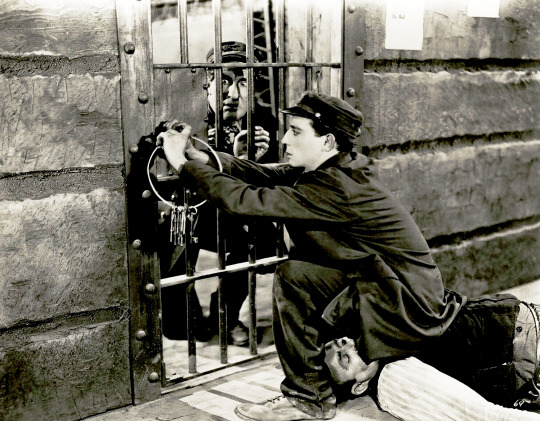
Buster Keaton and Ernest Torrence Steamboat Bill Jr. - 1928
#buster keaton#1930s#1910s#1920s#1920s hollywood#silent film#silent comedy#silent cinema#silent era#silent movies#pre code#pre code hollywood#pre code film#pre code era#pre code movies#damfino#damfinos#vintage hollywood#black and white#buster edit#old hollywood#slapstick#ernest torrance#steamboat bill jr#1928
57 notes
·
View notes
Text
#SundaySales There are hats & then there are Buster Keaton porkpie hats. Get yours made to the specifications of the man himself, here: busterstuff.com/product/porkpie-hat/208
#sunday sales#buster keaton#pork pie#hat#merch#merchandise#busterstuff.com#steamboat bill jr#ernest torrance#silent era#silent movies#vintage hollywood#1920s#ibks#the international buster keaton society#buster keaton society#the damfinos#damfino#damfamily
4 notes
·
View notes
Text

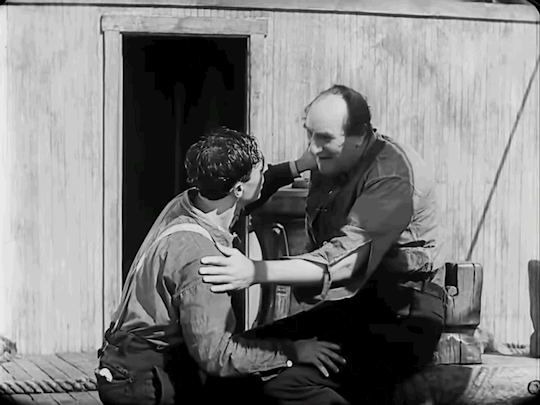
Buster Keaton and Ernest Torrance as father and son in Steamboat Bill Jr. 1928
#buster keaton#ernest torrence#steamboat bill jr#silent film#silent comedy#1920s#1920s cinema#golden age of hollywood#silent movies#slapstick#comedy
22 notes
·
View notes
Text
THE HUNCHBACK OF NOTRE DAME (1923) – Episode 172 – Decades Of Horror: The Classic Era
“Why was I not made of stone, like thee?” Existentially or metaphysically speaking? Join this episode’s Grue-Crew – Chad Hunt, Daphne Monary-Ernsdorff, and Jeff Mohr along with guest host Michael Zatz – as they visit Cathédrale Notre-Dame de Paris via Universal’s stunning, purpose-built, 19-acre set to discuss The Hunchback of Notre Dame (1923) and Lon Chaney’s star-making role as Quasimodo.
Decades of Horror: The Classic Era Episode 172 – The Hunchback of Notre Dame (1923)
Join the Crew on the Gruesome Magazine YouTube channel! Subscribe today! And click the alert to get notified of new content! https://youtube.com/gruesomemagazine
ANNOUNCEMENT Decades of Horror The Classic Era is partnering with THE CLASSIC SCI-FI MOVIE CHANNEL, THE CLASSIC HORROR MOVIE CHANNEL, and WICKED HORROR TV CHANNEL Which all now include video episodes of The Classic Era! Available on Roku, AppleTV, Amazon FireTV, AndroidTV, Online Website. Across All OTT platforms, as well as mobile, tablet, and desktop. https://classicscifichannel.com/; https://classichorrorchannel.com/; https://wickedhorrortv.com/
In 15th-century Paris, the brother of the archdeacon plots with the gypsy king to foment a peasant revolt. Meanwhile, a freakish hunchback falls in love with a gypsy dancer.
Directed by: Wallace Worsley
Writing Credits: Victor Hugo (1831 novel); Perley Poore Sheehan (adaptation) (as Perley Poor Sheehan); Edward T. Lowe Jr. (scenario); Chester L. Roberts (uncredited)
Produced by: Carl Laemmle (uncredited); Irving Thalberg (uncredited)
Editing by: Edward Curtiss (as Edward Curtis); Maurice Pivar; Sydney Singerman
Art Direction by: Elmer Sheeley (as E.E. Sheeley); Sidney Ullman (as Sydney Ullman)
Set Decoration by: Hans Dreier (uncredited)
Costume and Wardrobe Department: Gordon Magee (costume supervisor) (uncredited)
Selected Cast:
Lon Chaney as Quasimodo
Patsy Ruth Miller as Esmeralda
Norman Kerry as Phoebus de Chateaupers
Kate Lester as Madame de Condelaurier
Winifred Bryson as Fleur de Lys
Nigel De Brulier as Don Claudio (as Nigel de Brulier)
Brandon Hurst as Jehan
Ernest Torrence as Clopin (as Ernest Torrance)
Tully Marshall as El Rey Luis XI
Harry von Meter as Mons. Neufchatel (as Harry Van Meter)
Raymond Hatton as Gringoire
Nick De Ruiz as Mons. Le Torteru (as Nick de Ruiz)
Eulalie Jensen as Marie
Roy Laidlaw as Charmolu
Ray Myers as Charmolu’s Assistant (as W. Ray Meyers)
William Parke as Josephus (as William Parke Sr.)
Gladys Brockwell as Sister Gudule
John Cossar as Judge of the Court
Edwin Wallock as King’s Chamberlain
Marion Gray as Woman at Ball (uncredited)
Gilbert Roland as Extra (uncredited)
Lon Chaney Sr. is a legend of classic horror movies. His make-up and monsters are iconic, from Phantom of the Opera (1925) to London After Midnight (1927). Another mind-blowing Chaney character is Quasimodo from The Hunchback of Notre Dame (1923). Join the Grue-Crew and special guest host, Grue-Believer and GM Fan Mikey Z, for their look back at this influential, silent masterpiece.
You might also want to check out these other Classic Era episodes focused on silent screams:
THE CABINET OF DR. CALIGARI (1920) – Episode 13
NOSFERATU (1922) – Episode 21
THE PHANTOM OF THE OPERA (1925) – Episode 42
THE CAT AND THE CANARY (1927) – Episode 60
HÄXAN (1922) – Episode 79
THE PHANTOM CARRIAGE (1921) – Episode 85
THE GOLEM (1920) – Episode 99
FAUST (1926) – Episode 145
DR. JEKYLL AND MR. HYDE (1920) – Episode 160
At the time of this writing, The Hunchback of Notre Dame is available for streaming from Amazon Prime, MGM+, Kanopy, Tubi, Crackle, and PlutoTV. The film is available on physical media as a Blu-ray from Kino Lorber.
Gruesome Magazine’s Decades of Horror: The Classic Era records a new episode every two weeks. Up next in their very flexible schedule, as chosen by guest host “Jose,” is The H-Man (1958), another Toho classic directed by Ishirô Honda. Beware the liquidman!
Please let them know how they’re doing! They want to hear from you – the coolest, grooviest fans: leave them a message or leave a comment on the Gruesome Magazine YouTube channel, the site, or email the Decades of Horror: The Classic Era podcast hosts at [email protected]
To each of you from each of them, “Thank you so much for watching and listening!”
Check out this episode!
0 notes
Text
Day 2: Ernest Torrance

This is a silent film released in 1924.
Fun fact: What I do know is the year before (1923) he made a speech that I read several times called "Captain Hook at Eton". This is mentioned in my @music-meme-of-365-days. But here is a link anyways...
I think it had an influence on later versions of Captain Hook. It also breaks any theories of Captain Hook being a lost boy.
There are more notes/links in Keep reading...


Peter Pan by Paramount Pictures (1924), an authorized silent movie adaptation. It starred Betty Bronson as Peter Pan, Ernest Torrence as Captain Hook, Mary Brian as Wendy Darling, and Virginia Brown Faire as Tinker Bell. Barrie was involved in this production and wrote a screenplay for it, but Paramount instead used the original stage script, taking dialogue from it for the intertitles.
youtube
Someone did upload it to Youtube...I don't know if it is the full version of the movie.
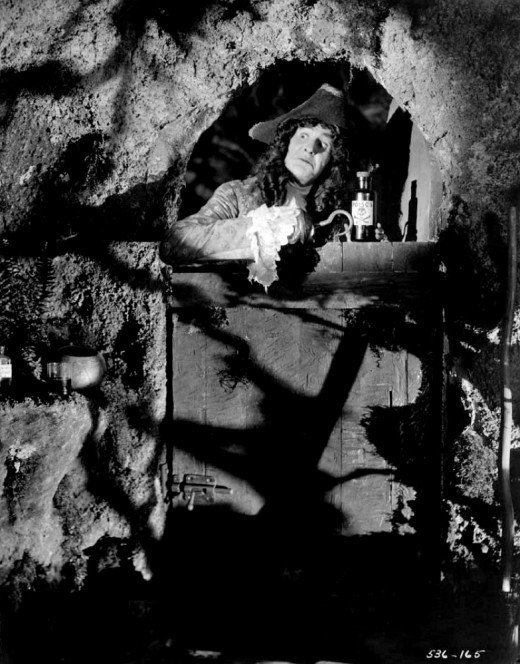
Uploaded an image of the version of Captain Hook in the film.
For this version, the hook is on the right-hand and he has his curls. No mustache still.
#1923 for the speech#captain hook at eton#sir j m barrie#1924 for the silent film#captain hook was not a lost boy#right-handed hook#Youtube#Captain James Hook
0 notes
Photo
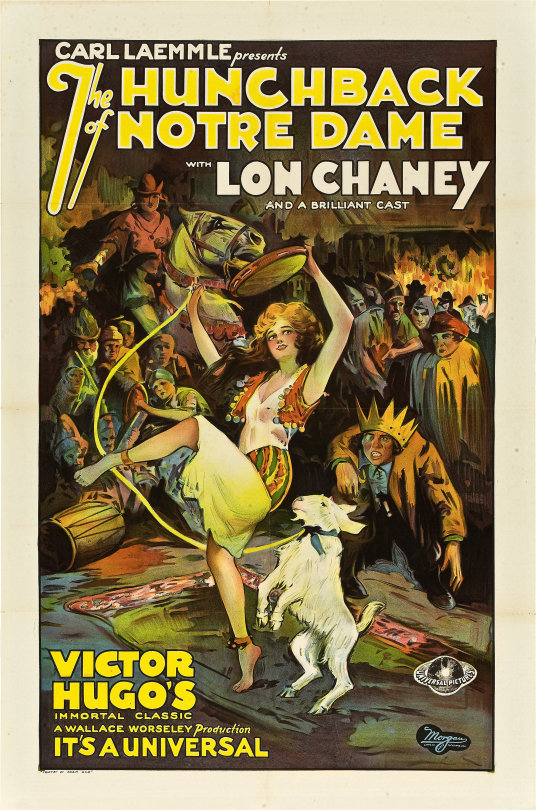
#the hunchback of notre dame#lon chaney#patsy ruth miller#norman kerry#brandon hurst#raymond hatton#ernest torrance#nigel de brulier#wallace worsley#1923
17 notes
·
View notes
Photo
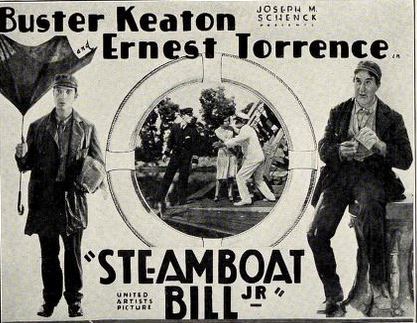
Interesting lobby card that gives Keaton and Torrence equal billing!
#buster keaton#ernest torrance#the magic of archive dot com#found this in an old pressbook#steamboat bill jr#silent film
13 notes
·
View notes
Photo

The Heritage of the Desert (1924) was produced and directed by Irvin Willat. Irvin had 39 directing credits in his career, from 1917 to 1937, with nothing worth mentioning.
2 notes
·
View notes
Photo

Victor Varconi and Majel Coleman in The King of Kings (Cecil B. DeMille, 1927)
Cast: H.B. Warner, Dorothy Cumming, Ernest Torrance, Joseph Schildkraut, James Neil, Joseph Striker, Jacqueline Logan, Rudolph Schildkraut, Victor Varconi, Majel Coleman, Montagu Love, William Boyd, Michael D. Moore, Kenneth Thomson, Alan Brooks. Screenplay: Jeanie Macpherson. Cinematography: J. Peverell Marley. Production design: Dan Sayre Groesback, Anton Grot, Julian Harrison, Edward C. Jewell, Mitchell Leisen. Film editing: Anne Bauchens, Harold McLernon. Music: Hugo Riesenfeld.
Director Cecil B. DeMille always had a fondness for unintentionally hilarious dialogue. Think of Anne Baxter's Nefretiri purring to Charlton Heston's Moses in The Ten Commandments (1956), "Oh, Moses, Moses, you stubborn, splendid adorable fool!" I'm almost sorry that The King of Kings is a silent film, so that we can't hear Mary Magdalene (Jacqueline Logan) utter the line: "Harness my zebras -- gift of the Nubian king! This Carpenter shall learn that he cannot hold a man from Mary Magdalene!" After the intertitle card fades, she swans off to rescue her lover, Judas Iscariot (Joseph Schildkraut), from the clutches of Jesus (H.B. Warner). It seems that Judas has become a disciple of Jesus because he believes that he has a chance at a powerful position in the new kingdom that Jesus is planning. This isn't the only hashing-up of the gospels that the credited scenarist, Jeanie Macpherson, commits, but it's the most surprising one. It also gives director DeMille an opportunity to introduce some sexy sinning before he gets pious on us: The Magdalene is vamping around a somewhat stylized orgy and wearing a costume (probably designed by an uncredited Adrian, who was good at that sort of thing) that leaves one breast almost bare. This opening sequence is also in two-strip Technicolor, as is the Resurrection scene some two and a half hours later. Yes, it's an enormously tasteless movie. Warner's Jesus is the usual blue-eyed blond in a white bathrobe found in vulgar iconography, and the actor has little to do but stand around looking wistful and sad at the plight of the world, occasionally giving a little smile that, with Warner's thin, lipsticked mouth, verges dangerously on a smirk. The film goes heavy on the miracles, even recasting one of the gospel writers, Mark, as a boy (Michael D. Moore) cured of lameness by Jesus. (When he throws away his crutch, it accidentally strikes one of the Pharisees standing nearby, only adding to their enmity to Jesus.) Unfortunately, DeMille stages the revival of Lazarus (Kenneth Thomson) in a way that enhances its creepiness, having him emerge from a sarcophagus swathed in bandages like a horror-film mummy. Still, there's entertainment to be had, if you're not too demanding. Schildkraut's Judas is fun to watch at times: Once, he even skulks away like Dracula with his face hidden by his cloak. His father, Rudolph Schildkraut, plays the sneering high priest Caiaphas, Victor Varconi is a suitably conflicted Pontius Pilate, and William Boyd, soon to make his name as Hopalong Cassidy, is Simon of Cyrene, who helps Jesus carry the cross. The storm and earthquake after the Crucifixion is a DeMille-style special-effects extravaganza. The cinematography by J. Peverell Marley leans heavily on filters and screens to cast halos around Jesus, but does what it can to bring DeMille's characteristic tableau groupings to life. Fortunately, the movie also goes out of its way to avoid arousing antisemitism: The crowds calling for crucifixion are shown to be largely made up of bribed bullies who are suppressing those who want Jesus released, and one man furiously rejects the bribe by saying that as a Jew he cannot betray a brother.
4 notes
·
View notes
Note
What are some of your favorite things ever? (It can be anything; Food, Feelings, Books and Movies, Characters, Places, etc...)
It’s Big Thought Time
Hmm, food is always tricky so I’ll have to go with multiple, definitely pancakes/blini (equally enjoy making them and eating them), both the regular wider blin and this kind of tiny yeasted blin, both with fruit or generally anything sweet; then chicken schnitzel, svíčková (traditional czech, beef steak with pretty thick sauce made of root vegetables, spices and cream and served with bread dumpling, it sounds fancy but is actually pretty easy to make), tortillas, asian fried noodles, sushi and the like, nothing special
Feelings, hm, you know that feeling when your head is buzzing and your chest almost hurts from excitement about something? The kind of almost a high, when you discuss characters and AUs with friends for hours and hours. The feeling when you’re almost lucid dreaming and in that dream are capable of flight. And the feeling when something you said and did not even think as very funny makes your friend laugh to the point of tears. That’s one of the most special feelings in the world.
For books, I’m not going to count Frankenstein here, that has long since evolved far beyond being a mere book for me. So as for “normal” books I’d probably select Doctor Sleep by Stephen King and Star Wars Republic Commando series by Karen Traviss, those are the only two that ever made me cry. Also the first two Warrior Cats books, those hold a special place in my heart
Movies, obviously How To Train Your Dragon, Jurassic Park one and three, Disney’s Dinosaur, Dragonheart and Eragon (terrible adaptation of the books but there’s a lot of sentimental value), these were a big part of my childhood and I think shaped a large part of me as a human being, especially HTTYD (that alone would be enough for a whole separate post). Lion King 2, Hunchback of Notre Dame, Treasure Planet and Brother Bear are also movies I’d watch any time. Also Pan’s Labyrinth by Guillermo del Toro is an amazing movie, I adore it, and it’s one of the reasons why I think del Toro would make the best Frankenstein adaptation. Please watch the movie, it’s terrifying, it’s heartbreaking, it’s gorgeous.
Characters, in no particular order, Varian from Tangled the Series, Danny Torrance from Doctor Sleep (and technically The Shining), Graystripe from the first Warrior Cats arc, Fi from the Republic Commando series, there is definitely more but I can’t think of any more right now. The Frankenstein characters are for me on a fine line between characters and OCs but it’s gotta be Henry, Robert, Victor (not exactly as a person but he’s an incredibly interesting character and, yeah, I feel sorry for the poor bastard) and if headcanons and AUs count then it’s my son, my boy Ernest
Places, during those short three weeks before schools closed and moved to online, my university’s city quickly became my favourite, the dorms, the historical centre where the lecture buildings are located, the architecture, the vibe... I miss it. And I really like the Alps (as may have been clear from my “Henry and mountains discourse” post :D), and in general high elevated places where the view is wide and far and the wind lifts your soul to the sky. Also one particular forest in the Jeseníky mountains, (Czech republic). And anywhere where you can see the sky.
Welp that was a long post, sorry for that lol
And thank you for the ask <3
3 notes
·
View notes
Text
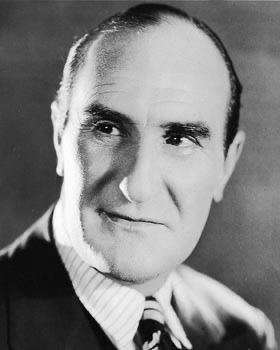
Ernest Torrence (born Ernest Torrance-Thomson, 26 June 1878 – 15 May 1933) was a Scottish film character actor who appeared in many Hollywood films, including Broken Chains (1922) with Colleen Moore, Mantrap (1926) with Clara Bow and Fighting Caravans (1931) with Gary Cooper and Lili Damita. A towering (6' 4") figure, Torrence frequently played cold-eyed and imposing villains.
He was born to Colonel Henry Torrence Thayson and Jessie (née Bryce)[1] on 26 June 1878, in Edinburgh, Scotland, and as a child was an exceptional pianist and operatic baritone and graduated from the Stuttgart Conservatory, Edinburgh Academy before earning a scholarship at London's Royal Academy of Music. He toured with the D'Oyly Carte Opera Company in such productions as The Emerald Isle (1901), Little Hans Andersen (1903) and The Talk of the Town (1905) before disarming vocal problems set in and he was forced to abandon this career path.
Sometime prior to 1900, he changed the spelling of Torrance to Torrence and dropped the name Thomson. Both Ernest and his actor brother David Torrence went to America, with Ernest joining David in New York in September 1911. Focusing on a purely acting career, Ernest and his brother developed into experienced players on the Broadway New York stage. Ernest received significant acclaim with Modest Suzanne in 1912, and a prominent role in The Night Boat in 1920 brought him to the attention of the early Hollywood filmmakers.
Torrence played the despicable adversary Luke Hatburn in Tol'able David (1921) opposite Richard Barthelmess and immediately settled into films for the rest of his career and life. He played an old codger in the acclaimed classic western The Covered Wagon (1923) and gained attention from his roles in The Hunchback of Notre Dame (1923) as Clopin, king of the beggars, and with Betty Bronson in Peter Pan (1924) as the dastardly Captain Hook. He played an Army General who escapes into the circus world and becomes a clown in The Side Show of Life (1924).
In an offbeat bit of casting he paired up with Clara Bow in Mantrap (1926), unusually as a gentle, giant type backwoodsman in search of a wife. He appeared in other silent film classics such as The King of Kings (1927) (as Peter) and Steamboat Bill, Jr. (1928) as Buster Keaton's steamboat captain father. During the course of his twelve-year film career, Ernest made 49 films, both silent and "talkies".
Torrence made the transition into talking films very well, starring in Fighting Caravans (1931) with Gary Cooper and Lili Damita. He was able to play a notable nemesis, Dr. Moriarty, to Clive Brook's Sherlock in Sherlock Holmes (1932) in one of his last roles.
Filming for I Cover the Waterfront (1933), in which he starred as a smuggler opposite Claudette Colbert in New York City, had just been completed when he died suddenly on 15 May 1933. While en route to Europe by ship, Torrence suffered an acute attack of gall stones and was rushed back to a New York City hospital. He died of complications following surgery.
#ernest torrence#silent era#silent hollywood#silent movie stars#classic hollywood#classic movie stars#golden age of hollywood#1910s movies#1920s hollywood#1930s hollywood
1 note
·
View note
Text
OCC
Cr1, ele/dele, +18
IC – VAMPIROS
Parece que BENJAMIN TORRANCE foi confundido com ROBERT PATTINSON, enquanto passeava pelas ruas de Eden essa noite. Pertencendo ao clã NOSFERATU, da Seita CAMARILLA, foi transformado em vampiro há 78 anos, mas ninguém diz que ele tem 108 anos, já que aparenta ser bem mais novo. Ganhou fama pela cidade não apenas por ser MÉDICO CIRURGIÃO, mas por se mostrar CONFIÁVEL e RECLUSO. De qualquer forma, eu só me importaria em não estar por perto quanto o sol se pôr...
HABILIDADE
ANIMALISMO – Ben usa seus poderes de animalismo para controlar os animas, usando-os como seus espiões, sejam os ratos do esgoto para controlarem seus domínios, os pássaros para vigiar os céus, ou outros, para atingir seus objetivos.
DIETA
Usando os benefícios da profissão de cirurgião, Ben tem acesso a sangue fresco. De uma forma que não levanta nenhuma suspeita, vem há anos extraindo o alimento de seus pacientes, tomando sempre o máximo cuidando para não por nenhum deles em risco.
HEADCANONS
Nascido no norte da Áustria, no ano de 1915, a vida de Ben sempre foi muito difícil, perdendo seu pai muito cedo e, vivendo de maneira precária toda a sua infância, sua vida só viria a mudar no ano de 1931. No verão daquele ano, com seus 16 anos recém completos, Ben foi convocado a ingressar no Exército Austríaco. O período era delicado, e Ben podia sentir uma forte tensão pairando no ar. Foi nesta época que o jovem aprendeu o oficio de médico, sob a tutela de Ernest Wolfgang. Nos anos que se seguiram, tudo parecia finalmente estar se acertando para o rapaz, tinha bons amigos, e uma vida confortável, mas tudo viria a mudar mais uma vez com o início da Segunda Grande Guerra.
Apesar de não concordar com os objetivos de seus líderes, Ben acabou sendo arrastado para uma empreitada que acabaria mudando sua vida, ou melhor dizendo, acabaria pondo fim a ela, e iniciaria algo novo. No ano de 1945, então com 30 anos, Ben acabou sendo ferido mortalmente quando resgatava seus companheiros no campo de batalha. Lembra muito pouco daquela noite, apenas flashs do sangue quente encobrindo seus olhos, e de ser levado aos cuidados de seu antigo mentor. Nos momentos finais de sua vida o homem se debruçou sobre Ben e falou que tudo ficaria bem.
Após o que pareceram dias, Ben acordou em uma caverna, úmida e imunda, se sentindo muito fraco, porém vivo, pelo menos era o que parecia. Aos poucos, seu corpo foi se adaptando à nova condição, porém sentia uma sede incontrolável e seu corpo assumiu uma nova forma, parecida com a de uma besta. Passou alguns meses ali, se alimentando de pequenos animais e roedores que frequentavam o local. Acabou por descobrir que não precisava mais da carne para a sobrevivência, mas sim do sangue das presas.
Com o passar dos anos, Ben aprendeu a conviver com sua nova forma, controlando seus novos poderes e habilidades, passando a viver abaixo da sociedade, apenas observando a superfície e saindo esporadicamente para se alimentar, porém nunca fazendo vítimas humanas. Com os anos, e as infindáveis viagens, Ben acabou descobrindo um local na América com seres iguais a ele e, possivelmente, respostas. Ao se direcionar para lá, viajando clandestinamente no interior de navios, Benjamin finalmente chegou ao seu destino, e para sua surpresa, na chegada a Eden, foi acolhido por seus semelhantes, como se estes pudessem sentir sua presença se aproximando. Depois de se enquadrar na Camarilla, iniciou uma nova vida na cidade, assumindo uma nova personalidade, vivendo como um médico normal do subúrbio.
0 notes
Text
The real Clara Bow.
"(I'm) just a woikin goil" Source: Clara Bow And a working girl she was. During her rise to fame and eventual stardom Clara Bow, one of the most popular and talented actresses the screen has ever produced and the ultimate ideal of the 20s flapper, was the most overworked and underpaid star then in Hollywood. Producer B.P. Schulberg had her under personal contract and steered Clara's career becoming his greatest meal ticket. But fame hadn't come easy to this Brooklyn bombshell. Clara was born into the world on July 29,1905.And her childhood was nothing but unsettled. Her home life was a shambles as her father was an alcoholic, abusive and a womanizer. Her mother had come from a similar background and was given to regular mental "bouts". As a result Clara became quite sensitive and shy and developed a slight speech impediment. When she was old enough the streets more often than not were her home away from home when her father or mother proved too much. She became quite the tomboy but a tomboy who frequented the movies any chance she could get. She would do anything she could to earn money to help pay for her movie habit and to help her father with keeping the household together, as her mother was not able to work steadily for any length of time. Her favourite movie actress was Mary Pickford and she would stand in front of a mirror emulating her. In January 1921 Motion Picture Magazine sponsored a "Fame and Fortune" contest. Clara saw the ads and badly wanted to give it a try. At that moment she didn't have enough money for the two photos that she would need for the contest entry so she sheepishly approached her father. Unexpectedly her father not only agreed but accompanied her personally to the photographer's studio and paid the $1.00 for the shoot. A few days later she attended the offices in New York of Motion Picture Magazine and was crestfallen when she entered to find it crammed with many lovely looking girls, all there for the same reason. Looking at some of the beautifully dressed wanna be's, she figured she didn't have a chance but she had come too far to give up so she persevered through the obligatory interview with the magazine staff and returned home to await the decision. A month or so later Clara was given the astounding news that it was she out of all the others, that had been picked as the magazine's winner;she was floored. Soon after she was given a small part in a movie called "Beyond The Rainbow". The part was so small that it was excised from the original release prints but later when Clara's star had risen to such phenomenal heights they reinserted it and re-released it. One night after work had been completed on the film Clara awoke to find her mother standing over her holding a butcher knife. Her father and Clara had been trying to keep anything about her film ambitions quiet, but her mother had gotten wind of it and this night was threatening to use the knife. Clara as calmly as she could talked her mother into surrendering the knife to her. Clara prayed that there would be no such other instances but shortly after the film's release her mother attacked Clara once more. She chased Clara around and around the room screaming that no daughter of hers was going to go into such a questionable and perverted occupation. Clara retreated to the streets sobbing and it took her father some time to calm her mother down. After the dust had settled her father quietly made inquiries and eventually had his wife put into an asylum. And it was there her mother passed away just a few months later in early 1924. Clara was now under personal contract with Hollywood producer B.P. Schulberg who had seen her work in "Down to the Sea in Ships ", her other 1922 effort. She would complete three movies in 1923 and moved on into 1924 doing an astounding eight pictures.1924 would prove to be a watershed year for her. She was picked as one of the W.A.M.P.A.S. (Western Associated Motion Picture Advertising Society) girls and the only one of the group that actually went on to better things. Then Schulberg moved on to Paramount studios taking his young protege with him. And Clara was getting much needed attention from critics and business insiders alike. Her star was definitely on the rise. Clara's schedule was even more hectic in 1925 for it saw no less than 14 films released!.1926 saw Clara do eight films among them "Mantrap " with Ernest Torrance which really made Clara a star and "Kid Boots" starring a well known vaudevillian making his screen debut, Eddie Cantor. "Kiss me Again" was significant in that it showed off Clara's range as an actress in a more serious role. She garnered great reviews for her part but this was one of the very few serious roles she would get in her career. Directors Victor Fleming and Paul Bern stated on several occasions that Clara could be one of the greatest dramatic actresses of her time It is so unfortunate Hollywood didn't have the foresight and guts to stick her in other than formulaic roles featuring her as a "modern" girl, a flapper and emphasizing her sexuality. They realized they could stick Clara in any kind of picture no matter how bad the script and because of her sheer presence and forcefulness she would carry the day. And as long as his meal ticket was making money B.P. Schulberg was quite happy to keep the status quo. But it was a visit on a set by British author and sex maven Elinor Glyn that kicked Clara's career up another big notch. She had written several novels on relationships between couples that were very daring for their day. Elinor watched Clara work and declared that she had "It". An energy or sexually charged charisma and magnetism that affected everything and everyone around her. And it was this "It" that made her glow on the screen .And there is no doubt Clara lit up the screen. And 1927 was to showcase Clara at her finest. She starred in about seven vehicles that year but two are standouts. The first is "It" and it did indeed capitalize on Clara's "personality" but it also featured a walk on by Elinor Glyn herself to give the movie it's obvious tie in. It was about a department store clerk who falls in love with the young owner of the store that she works in. It had all the typical mix ups, tears and laughter associated with that type of movie but it showed Clara off to great advantage and the film still stands up extremely well today. The second film was "Wings" and was set during the First World War and it co-starred Richard Arlen and Buddy Rogers as two fliers who see action overseas. Clara who always had a crush on Buddy meets up with him in France while driving an ambulance there. There was quite a few touching scenes throughout the movie involving Clara. In fact the movie has quite a serious feel to it throughout especially through it's realistic depictions of aerial combat in the war and its consequences. But when Clara is on screen the movie literally comes alive. It is a testament to her ability as an actress that she could do that repeatedly, picture after picture. And it's in no small way that she helped the film win the first Academy Award for best picture that year. 1927 went into 1928 and her film output continued unabated as did her career. She starred in four pictures that year; "Red Hair" and "The Fleet's In " being standouts. But 1929 would prove to be an unnerving one for many actresses and actors and Clara Bow unfortunately was one of them. Clara was at the top of her game. She was often seen driving around Hollywood in a flame red car (a Kissel or Stutz-Bearcat depending on the story) with one or more of her auburn coloured Chow dogs. She was known quite well in the neighbourhood by the local constabulary who would frequently drop in at the rear entrance to her home to have a cup of coffee and sandwiches and have a chat. Clara was frequently linked with many men over the years and was a constant source of gossip for the papers to engorge. One incident was a touch football game she played on her front lawn with the University of Southern California Football team. Everyone had such a great time that she invited them over again. This incident got turned inside out until one read that Clara had slept with every member of the USC football team! Another incident that didn't help Clara's reputation at all involved Clara attending a gambling establishment in Lake Tahoe. It was reported she had welshed on a gambling debt while playing there. She had gotten into an argument with staff personnel and refused at first to pay but it she eventually settled. But not before the incident had leaked out and done some damage publicly. Clara was a very trusting and unassuming individual and often wore her heart on her sleeve. She was in reality a very insecure person and she many times publicly decried that her past home life had left many a scar on her emotionally. And she also stated that mentally she could just not shut down and was always worrying about something and had insomnia.In point of fact Clara had become overworked and overwrought. What happened in 1929 sent Clara hurtling precariously towards the edge. The movie industry had been experimenting with sound pictures from the early 1920s.But it was Jolson's "The Jazz Singer" in 1927 (little dialogue but with musical numbers) and the first full talking movie in 1928 "Lights of New York", that broke the dam wide open and there was no turning back. But the big question was how everyone was going to sound, literally. Many actor's didn't have the vocal capability of transitioning from silence into sound and as a result found themselves leaving the business. In those days sound was monitored from a booth, and especially in the early days the microphone was static and immovable. Actor's would have to know where the mike was and dutifully stand within its' range to be recorded properly. The camera's were put into sound proof boxes where the camera's whirring would not be picked up by the mike. Consider this December 1929 Photoplay article excerpt: "Terrible Mike has cooled down the incandescent flapper-he's giving her an awful kick, and is putting Poor Old lady Has-Been on the Throne" It was a stifling environment in which to work and for Clara this was definitely another pressure which she did not need. The making of "Wild Party", her first talking picture, was anything but smooth. Clara was overwrought with the added pressure of having to know where and when to stand and was now having to pay attention to her annunciation as well as her voice level. In fact it has been reported that in her run through for her very first scene as she comes in and says:" Hello Everybody" all the sound valves in the sound booth exploded! Clara would more than once become so upset she would run off the set crying. But the movie was made and Clara showed she had not lost "It" and it garnered great reviews. Clara's voice came over very well and was able to rise well above the primitive recording techniques of the day. But Clara's career was slowly grinding to an inevitable end and "Mike" was the least of her worries. Clara would make between 1929 and 1933 10 more pictures and all quite successful. Her last two "Call Her Savage" and "Hoopla" were especially good vehicles for her and showed off her acting ability to its best. But strangely they weren't successful at the box office. In January of 1931 Clara was involved in a very public trial in regards to her former personal secretary Daisy Devoe who it was claimed had mishandled Clara's funds. While Clara did not want to press charges the police saw fit to carry it through the court system anyways and many personal details of Clara's life came out during the trial. Clara was forced to testify but was in tears much of the time. When the verdict came down about a month later Devoe was sentenced to 18 months in jail. It was plain that Clara, as usual, had been much too trusting with her employee and when asked about the trial, being the person she was ,she could not kick Devoe even when she was down, it wasn't her nature: "The trouble with me is, I'm no sneak....I may have made mistakes...But my greatest mistake seems to have been that I was open and above board with everything". On December 4,1931 Clara married cowboy actor Rex Bell who she had been dating steadily for the last two years. They bought a ranch in Nevada and Clara would retire there permanently. But Clara was her mother's daughter and some of the same type of inflictions that harried her mother would eventually also do the same to Clara. The pressure of the last few years with sound, her personal life being spread more and more across headlines much of it exaggerated or totally untrue and her realization, albeit late, of her true worth and what the pittance was she actually received, in the end proved too much for the fragile Clara to cope with. Clara would spend much of her retirement years in and out of sanitariums and on drugs of one type or another to control her condition. She would always remain an insomniac and stated that the nights would always be the hardest. Clara had two sons one in 1935 and the other in 1938.Rex eventually gave up movies for a life in politics and by 1954 was the lieutenant governor of Nevada. In July of 1962 Rex died of a heart attack and Clara went all the way to Glendale, California to attend the funeral . Afterwards she retired back to the ranch and seclusion once more. To pass the time away in her final years she would often send letters off to stars that she admired and even answered fan mail that came to her. She would spend her days swimming and reading while at night television was her favourite pass time. . On September 27,1965 while watching the " Late, Late Show" she passed away quietly in her chair. In the late 1960s when film historian Kevin Brownlow wrote his fine work: " The Parade's Gone By" about silent films and their stars he completely overlooked Clara Bow and her works. Louise Brooks, a contemporary of Clara's, wrote to Mr.Brownlow the following: "You brush off Clara Bow for some old nothing like Brooks. The more I think about it the madder I get .Clara made three pictures which will never be surpassed, 'Dancing Mothers', 'Mantrap', and 'It' " And Louise Brooks was right. Clara has been largely forgotten and overlooked as time has passed by many critics and historians. And this is a travesty.For to watch Clara Bow today is to see a human dynamo, a force onto her own who literally brings the screen to life with her presence alone. But there was more to her than just "It" and she could act alongside the best of her day and in many instances surpass them at their own game. This was a star of the highest order. She defined an entire generation and she still touches us as equally today as she did over 70 years ago. She was an original. She was....Clara Bow.
1 note
·
View note
Text

Buster Keaton and Ernest Torrance in Steamboat Bill Jr. 1928
#buster keaton#ernest torrence#steamboat bill jr#silent film#silent comedy#1920s#1920s cinema#golden age of hollywood#silent movies#slapstick#comedy
16 notes
·
View notes
Text
August 2018 in Review
I have a weird memory. It’s highly pattern-driven and very visual. This means that my memory of films I’ve watched is based on images and series of images that made an impression instead of plot points. It’s why I rewatch movies so often. Even though I’ve been tracking my movie viewing habits for two and a half years, that doesn’t mean I’ve created strong memories for all those movies. That’s why I’m gonna start doing monthly roundups of the new-to-me films that struck me, one way or the other.
[If you wanna know all the films I’m watching, I keep full lists on letterboxd and imdb.]
The reviews below are essentially transcriptions of the notes I took right after watching the films. Because of Summer Under the Stars and my cosplay challenge, this month was pretty TCM heavy for me.
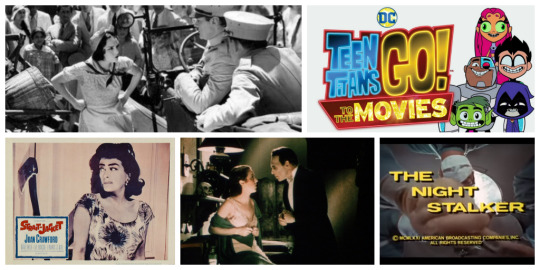
Full Roundup BELOW THE JUMP!
Teen Titans Go to the Movies (2018)
27 July 2018 | 84 min. | Color

Directed and Written by Aaron Horvath and Peter Rida Michail
Starring Greg Cipes, Scott Menville, Khary Payton, Tara Strong, and Hynden Walch
I’m already a fan of the show and the movie kicks it up a notch with its humor and style. [If you liked the original series, give TTG a chance already.] TTG to the Movies is a great superhero movie for anyone who’s down for superhero stories but is fatigued by the current spate of offerings. Grain-of-Salt warning here because I think Superman III (1983) is great.
Fun that they included some gags here and there for the parents out there who’ve had to hear the Waffles song a few too many times. Also, one of the best ending gags for a kid’s movie ever.
Where to Watch: Still in theaters, but I’d imagine Cartoon Network will be playing it soon.
Doctor X (1932)
27 August 1932 | 76 min. | 2-strip Technicolor

Directed by Michael Curtiz
Written by Earl Baldwin and Robert Tasker
Starring Lionel Atwill, Lee Tracy, and Fay Wray
I made the statement that Darkman (1990) is the most comic-book movie that isn’t adapted from a comic book. I hadn’t seen Doctor X yet though.
The set pieces are phenomenal. Each shot is artfully constructed and the way the shots are strung together makes the most of the production design. If one were to do a comic adaptation, it would take some imaginative work to not just mimic the film. The 2-strip technicolor is particularly effective in the laboratory scenes in creating an eerie aura. Sensational.
Lee Tracy is playing, as usual, a press man and he’s doing so perfectly. Tracy is so underrated.
Where to Watch: Looks like the DVD is out of print, so maybe check your local library or video store. TCM plays it every once and a while and, since Warner Bros has a deal with Filmstruck, I wouldn’t be surprised to see it pop up there eventually.
The Half-Naked Truth (1932)
16 December 1932 | 77 min. | B&W
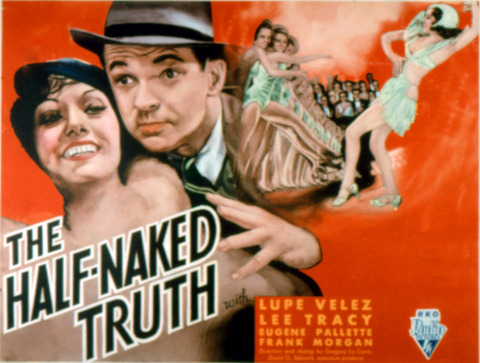
Directed by Gregory La Cava
Written by Corey Ford and Gregory La Cava
Starring Frank Morgan, Eugene Pallette, Lee Tracy, and Lupe Velez
You might very well think Lee Tracy was a featured TCM star this month. (Maybe next SUTS? Pretty please.)
Lupe Velez is so talented and natural it was nice to see her in a film where her wits were matched. I’ll be honest, I’m a big Lupe fan but, for most of her films, she’s the only good reason to watch them. This wasn’t the case here! There are a lot of wonderful moments with small movements and gestures that make Velez and Tracy’s relationship feel very real, as if they’re actually that caught up in one another. Eugene Pallette, Franklin Pangborn, and Frank Morgan round out the ensemble. The running eunuch joke might not be all that funny, but it’s a masterclass in not saying what you mean. Also, very cute chihuahua.
Where to Watch: The DVD is available from the Warner Archive. (So, once again, local library or video store might have a copy.)
The Cuban Love Song (1931)
5 December 1931 | 86 min. | B&W
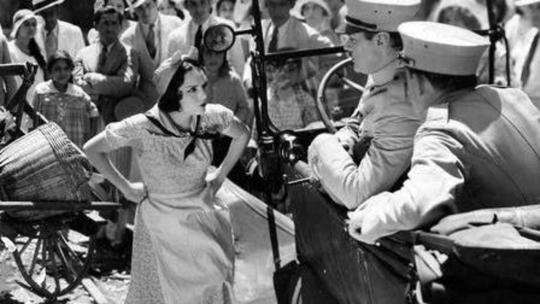
Directed by W.S. Van Dyke
Written by John Lynch, Bess Meredith, and C. Gardener Sullivan
Starring Jimmy Durante, Lawrence Tibbett, Ernest Torrance, and Lupe Velez
Lupe is wonderful in this. She plays a Cuban woman who sounds an awful lot like a Mexican woman--which might be something you have to overlook to enjoy the film FYI. Lawrence Tibbett has a shocking dearth of charisma in the lead, but Jimmy Durante, Ernest Torrence, and Louise Fazenda take the heat off him well. It’s a little hard to root for Tibbett’s character and the ending is disappointing. (Spoiler: privileging of the affluent “white” couple.)
The songs are great. I love the habit of placing people in musicals so that they are singing full force directly into each other’s faces. I don’t know why I find it so funny, but it’s not a mood ruiner for Cuban Love Song. The editing is fun and energetic. Until the war breaks out, there’s a lot of solid humor.
After watching so many Lupe films this month, I’d love to sit down with people who do and don’t know Spanish to talk about her films. There seem to be some divisions on social media and across blogs about Lupe’s films that might be attributable to whether or not one understands Spanish. I myself understand Spanish reasonably well and I think knowing what Lupe and others are saying makes almost all of her films funnier. And boy, does Lupe like calling men stupid animals.
Where to Watch: This one seems kinda rare. Looks like there may have been a VHS release, but you may just have to wait for TCM to play it again!
The Night Stalker (1972)
11 January 1972 | 74 min. | Color

Directed by John Llewellyn Moxey
Written by Jeffrey Grant Rice and Richard Matheson
Starring Carol Lynley, Darren McGavin, and Simon Oakland
and
The Night Strangler (1973)
16 January 1973 | 74 min. | Color
Directed by Dan Curtis
Written by Jeffrey Grant Rice and Richard Matheson
Starring Darren McGavin, Simon Oakland, and Jo Ann Pflug
I loved that these films are exactly like the Kolchak TV series. My SO and I have been watching the show weekly as it airs on MeTV and so he surprised me by renting the movies that kicked off the series. Honestly, watching backwards may have made the movies even more entertaining. How is Kolchak still working for Vincenzo in Las Vegas?? The answer is in Seattle.
The TV movies were intended as a trilogy, but after the success of the first two films, it was developed into a series instead. It’s cool to see how every piece of the Kolchak formula was in place immediately and how firmly Darren McGavin had a hold on the character. His chemistry with Simon Oakland (Vincenzo) is spectacular--a great comedy duo TBH. If you like their shouting matches on the show, Night Strangler has a humdinger to offer you.
Night Stalker is a pretty straight-forward vampire story, written by Richard Matheson, one of the great spec-fic writers of the 1960s and 1970s. Matheson also wrote one of the best undead novels of all time, I am Legend. What elevates the film over the basic mythology, aside from the great performances, pacing, and editing, is that the story’s really about how suppression actually goes down--how mundane and frustrating it can be even in the face of the supernatural.
Night Strangler is a little more creative with its monster. They integrate the nature and landmarks of Seattle in fun ways. The stripper characters are delightful. Jo Ann Pflug gives a truly funny performance and feels like a natural contender for Kolchak. Even his romantic relationships should be affectionately combative. The ditzy lesbian, Charisma Beauty (Nina Wayne) is hilarious and Wayne’s timing is impeccable. (BTW: they don’t explicitly call her a lesbian but it’s still made very overt.) There’s also a wonderful cameo by Margaret Hamilton.
As far as I can tell, it’s easier to get access to these films than the series. They’re worth seeing even if you haven’t seen the Kolchak TV show. They’re also a good pick if you’re a fan of X-Files, as Kolchak is the mother of that show. Even though I’m an X-Files fan and grew up watching it, Kolchak is edging it out for me lately. Maybe because if you’re telling a story about fighting for truth against the suppression of information, you undercut yourself by making the protagonist a fed.
Where to Watch: Kino Lorber is releasing restored editions of the films on Blu-ray and DVD in October!
The Mask of Dimitrios (1944)
1 July 1944 | 95 min. | B&W
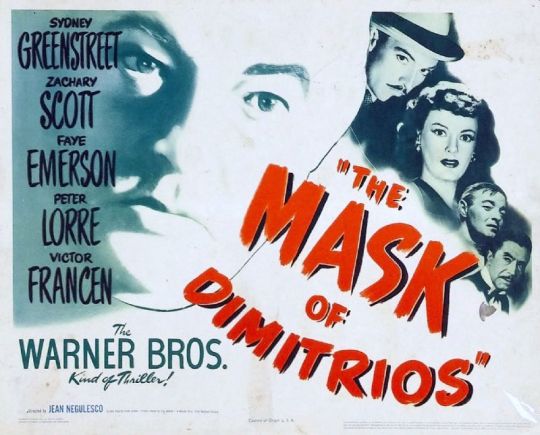
Directed by Jean Negulesco
Written by Frank Gruber
Starring Sydney Greenstreet, Peter Lorre, and Zachary Scott
This was great! I loved Peter Lorre and Sydney Greenstreet together. If you’re looking for a mystery story that flows and escalates well and presents a parade of interesting characters and locales, Dimitrios is for you. It’s also always nice to see Lorre in the lead.
Where to Watch: The DVD is available from the Warner Archive. (So, once again, local library or video store might have copy.)
Strait-Jacket (1964)
19 January 1964 | 93 min. | B&W
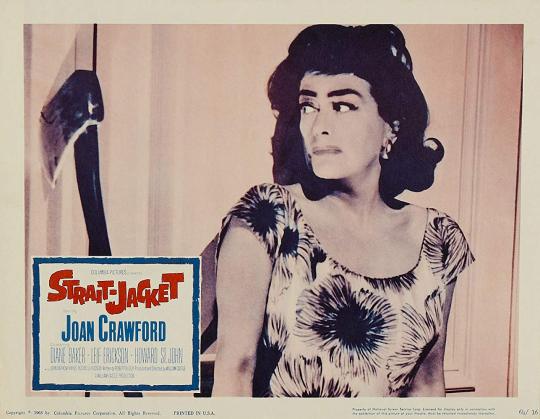
Directed by William Castle
Written by Robert Bloch
Starring Diane Baker and Joan Crawford
I mentioned in my Joan Crawford CUTS post that I’d been meaning to see this for years. My enjoyment of the film didn’t suffer a bit from that length of anticipation.
I like William Castle’s movies a lot. I like the campy humor and quirky stories. This one is campy still, but not as heavy on the humor--unless you have a real weird sense of humor. That’s not a strike against Strait-Jacket though. Castle builds so much tension that by the end of the film, you feel like anyone could be axe-murdered at any moment, which becomes absurdly fun. The ending might be a little predictable, but it’s fun to go along for the ride. I didn’t particularly like the tacked on ending but I guess every JC movie needs to end on JC?
Largely unrelated, but if you’re a Castle fan, have you checked out his TV show Ghost Story/Circle of Fear? The first episode, The New House, in particular is top notch.
Where to Watch: It’s on Blu-ray and DVD from Sony (your local library or video store might have a copy) and it’s for rent on Amazon Prime. It’s also still on-demand via TCM for another few days.
One I didn’t write up: Cairo (1942). I brought up in my Jeanette MacDonald post that I was hoping to find a MacDonald film I enjoyed watching on her Summer Under the Stars day and I did!
#monthly roundup#month in review#Film Review#film recommendation#movie review#movie recommendations#2010s#2018#Teen Titans#Teen Titans Go#Teen Titans Go To The Movies#1930s#pre-code#doctor x#the half-naked truth#cuban love song#the cuban love song#lupe velez#lee tracy#kolchak#the night stalker#kino lorber#the night strangler#television#70s tv#tv#tv movie#1970s#the mask of dimitrios#1940s
6 notes
·
View notes
Quote
Black Belt Magazine Weapons March 25 | 2013 The Karambit: Why Are These Southeast Asian Combat Knives Still Popular? Knife expert Ernest Emerson curates your journey through the history of Indonesia’s karambit. Of the many weapons fads that have come and gone, Emerson explores why these knives have stood the test of time! How many martial arts fads have you seen come and go? Whether it’s weapons, gadgets and tools or entire fighting systems, it’s rare that a fad will catch on and stick around for more than a few years. So when one does, it’s worth taking note. The karambit combat knives from Southeast Asia have the potential to be included in that elite group. Karambit History Over the past 4,000 years, mankind has effected thousands of variations in the design of swords, combat knives and impact weapons. The major influences in their evolutionary path are related to three triggers. One: The most profound trigger has been the discovery of new materials or the ability to process old materials into a more usable form. Human beings progressed from sharp sticks to stones, then to copper, bronze, iron and steel implements. Each discovery caused a major leap in weapon design and tactics. Two: The next trigger has been the clash of cultures. Every time there was a physical shift of cultures — whether because of famine, natural disaster or invasion — an opportunity to learn from the successes and failures of the enemy ensued. Inevitably, each side would adapt, modify or copy the weapons and applications that appealed to its people. Three: The last trigger has been invention and innovation. Whenever there was an advance in armor, weapon design or tactics, the development of the key needed to defeat it inevitably followed. Those that didn’t evolve quickly enough faded into obscurity or died off. Is it, then, safe to say that just because something has been surpassed by modern technology, it’s no longer effective? Far from it. For instance, the weapon of choice for some German street gangs is the baseball bat — which is nothing more than a club. A citizen can’t even possess one unless he or she is playing baseball or on the way to or from a game. They’re restricted because they’re effective. Karambit Effectiveness How does all that relate to the karambit? Well, the aforementioned principles apply here, as well. Consider: Why has the Japanese sword been around for more than a millennium? Why has the Nepalese kukri, or Gurkha knife, been used since the time of Alexander the Great? Why has the bow and arrow been in existence for 4,000 to 5,000 years? Because they all boast efficient designs that get the job done. The karambit is one of the many subjects Burton Richardson covers in Silat for the Street. The karambit is in the same boat. If the design of the karambit did not have merit, it too would have been relegated to the dustbin of history’s failures. Bottom line: The karambit was a good knife then — and the karambit is even better now because of 21st-century manufacturing methods. Karambit Origins The origin of the karambit is shrouded in mystery and controversy, but it’s fairly certain that these combat knives were devised in Indonesia many centuries ago. Karambit combat knives have become popular among modern martial artists mainly because of the increasing interest practitioners are showing in the Indonesian fighting arts and the subsequent proliferation of schools that teach them — thus, karambit combat knives have started finding their way into the mainstream. Karambit Styles The modern karambit comes in two styles, with numerous variations within each one. The fixed-blade karambit is the traditional version. It has all the features that fixed blades are prized for: strength, rigidity and a lack of moving parts. The folding-blade karambit is the more modern version of the ancient knife. It can be made reasonably strong, but it will never be as solid as a fixed blade. When you’re ready to cough up your hard-earned bucks for one style or the other, remember that you may train with a fixed blade, but chances are you’ll carry a folder. So if you’re in the market for a self-defense tool, that should weigh heavily on your decision. Of course, if you’re a member of the military or a law-enforcement unit that issues fixed-blade knives as part of its duty gear, you may want to opt for a fixed blade. Either way, the karambit is lightweight and efficient. Because of its minimal mass, it can be wielded almost as rapidly as you can move your hand. Its inwardly curved blade mimics the claw of a tiger or, if you look further back into history, a velociraptor. The shape of the blade enables even a rank beginner to effectively employ it simply by slapping forward and downward in a pawing motion. Some say the karambit is a cutting tool, not a stabbing tool. But anyone with any amount of experience with the weapon will attest that it can be driven into a target right up to its hilt with very little effort. Most karambit knives, but not all, have a hole in the butt of the handle, and it’s by far one of the finest features of the weapon. When you insert a digit—either your index finger or your pinkie, depending on the grip you prefer—you create a durable hold on the knife and make it virtually impossible for an opponent to dislodge it. Furthermore, if you were to lose your balance and splay your fingers to break your fall, the knife would still remain securely under your control. Karambit Combat When it comes to combat, the karambit has characteristics that are not found in other knife designs. Cerebral martial artists will forever debate distance and range, but reality is reality. In a real life-or-death struggle, things are up close and personal—and almost always destined to end on the ground. There’s no dueling and no dancing around. And that is where the design of the karambit shines. Its unique grip and claw-like blade enable you to use it with simple punching motions, and the finger ring permits you to grab an object or an opponent’s limb while still holding the knife. You can also use it to execute a myriad of devastating takedowns that will disable your opponent as he falls, thus opening a new range of combat that might be termed “knife grappling.” To top it all off, the karambit works perfectly when you attempt to execute virtually any traditional move derived from the Philippine slashing and cutting arts. One final characteristic makes the karambit unique in the world of bladed weapons: You can spin it around your finger like a tiny buzz saw. Few knife experts would recommend trying any sort of spinning, twirling or extended gripping in a real fight—just as you wouldn’t flip your balisong knife in a street battle. However, just like with the balisong, manipulating the weapon at blurring speed is half the fun of owning one. Just make sure you use a training knife—or at least apply a liberal covering of thick tape to the edge and the point if all you have is the real thing. Karambit Conclusions In the end, martial artists like you will decide whether the karambit is a fad or an ultra-efficient tool Americans will embrace for decades to come. For what it’s worth, I’ve evaluated plenty of designs during the almost 25 years I’ve been in the knife-making and knife-design business, and the karambit is the one I carry. It’s also the knife I would use if I had to protect my life or the life of a loved one. About the author: Ernest Emerson has trained in the martial arts for 32 years. He currently helms Emerson Knives in Torrance, California.
1 note
·
View note